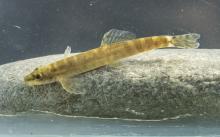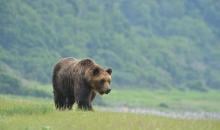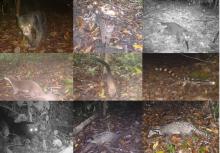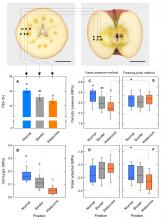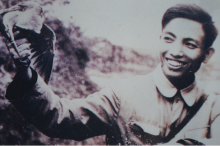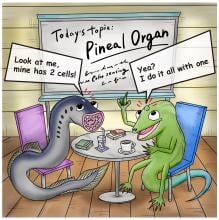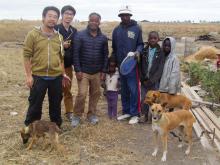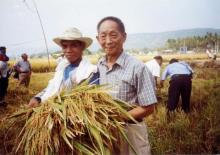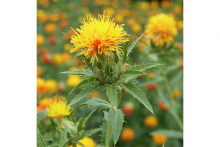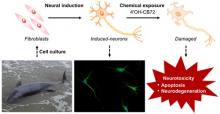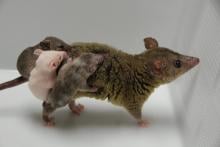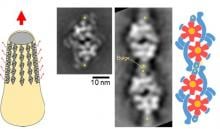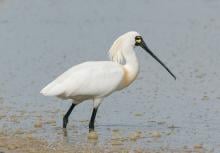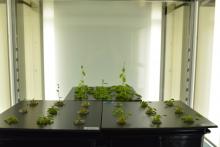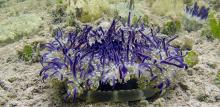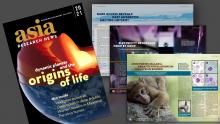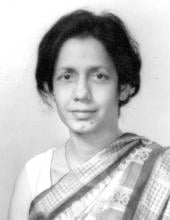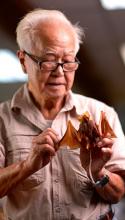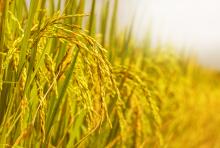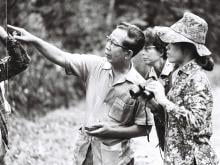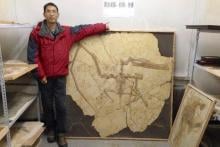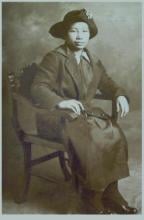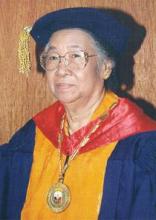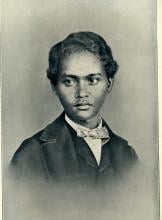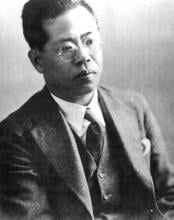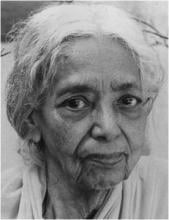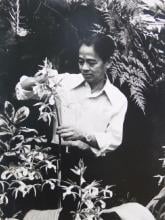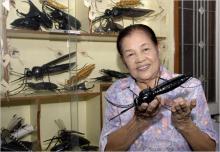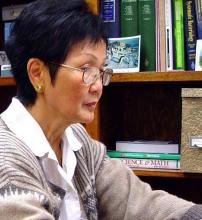Plants & Animals
News
17 Dec 2021
The discovery of the first millipede with more than 1,000 legs is reported in Scientific Reports this week. Prior to this, no millipede had been found with more than 750 legs.
10 Dec 2021
The critically endangered Batman River loach is the first of Shoal and Re:wild's Top 10 Most Wanted Lost Fishes to be rediscovered
23 Nov 2021
A joint research team at the Division of Biotechnology, DGIST, confirmed that microplastics(MPs) ingested orally accumulate in the brain and act as neurotoxic substances.
18 Nov 2021
Surveys have revealed an upward trend in the number of brown bears over the past three decades in Hokkaido, Japan's northernmost island. Researchers at Hokkaido University have been investigating the causes and implications of the increase.
05 Nov 2021
Quick seawater test may reveal health of corals, Infectious disease caused by a new nairovirus, Converting CO2 into useful compounds and Automated COVID-19 diagnosis from chest scans all in the November Editor's Choice. Plus our latest podcast: Gender and Conflict in Myanmar.
04 Nov 2021
The diversity of threatened fish in estuaries increases when surrounded by forest cover, whereas estuaries surrounded by farmland show the opposite effect.
27 Oct 2021
Giants in History: Maqsudul Alam (14 December 1954 – 20 December 2014) was a biologist from Bangladesh who is renowned for his research on genome sequencing.
20 Oct 2021
Just as humans may leave their home five minutes early to avoid a talkative neighbor or depart work late to avoid a rude coworker, carnivorous mammals may go out of their way to avoid other species. But they’re not trying to navigate awkward social interactions; rather, they are negotiating space and resources for survival.
23 Sep 2021
Single cell analyses reveal hidden turgor-associated metabolic changes and water flow across the flesh in watercored apples
20 Sep 2021
Võ Quý (31 December 1929 – 10 January 2017) was a Vietnamese ornithologist who studied the destruction of tropical forests and agricultural lands in Vietnam by Agent Orange, a herbicide used by the U.S. military during the Vietnam War.
15 Sep 2021
Using the lamprey, researchers from Japan analyzed the photosensory mechanism of the pineal organ, also called the pineal gland, in non-mammalian vertebrates and discovered a novel mechanism of pineal color discrimination (two-cell system) in which two types of photoreceptor cells, each containing two different opsins, are used to detect color. This discovery may provide insight into the evolution of color detection in other animals, including color vision in humans.
13 Sep 2021
Abnormally high levels of DNA methylation have been identified in dogs exposed to high levels of lead near a mining area in Kabwe, Zambia, by a team of scientists from Japan and Zambia.
11 Sep 2021
Giants in History: Chinese agronomist Yuan Longping (7 September 1930 – 22 May 2021) developed the first varieties of the high-yield, hybrid rice that brought food security to multiple countries including China, which had been ravaged by food shortages as recently as the mid-20th century.
07 Sep 2021
Giants in History: Gloria Lim (1930-11 July 2022) is a retired mycologist from Singapore who studied tropical fungi. One of the first students to attend University of Malaya when it was founded in 1949, she graduated as one of the two Botany Honours students from the inaugural class.
03 Sep 2021
Social vulnerabilities of coastal communities and their reliance on blue carbon ecosystem services may be improved by addressing three major factors, according to a study led by Hokkaido University researchers.
03 Sep 2021
Carthamin’s usage as dye dates back to ancient Egypt. But scientists only discovered its chemical structure in 2019. Now, a collaborative group of researchers has identified the genes required for the biosynthesis of carthamin.
30 Aug 2021
On 20 May 2021, Sri Lanka’s worst-ever marine disaster occurred when a fire erupted on the Singapore-registered MV X-Press Pearl container ship just 18 km Northwest of Colombo. While the long-term cost is yet to be determined, the negative impact on industries such as fisheries and tourism, and people who rely on the coastal resources of Sri Lanka is already apparent.
18 Aug 2021
A collaboration between Osaka City University and Setsunan University sheds light on the effect urbanization has on the flesh fly species Sarcophaga similis. Through a series of laboratory and in-field experiments, scientists show that an increase in nighttime illumination and temperature, two of the major characteristics of urbanization, can postpone S. similis hibernation anywhere from 3 weeks to a month.
06 Aug 2021
ARN's August 2021 newsletter features research about cancer-killing nanoparticles, a more powerful radio receiver tuning into space, good tiger news, and more. We also check in with a research team to find out what it was like to be the center of media attention.
27 Jul 2021
An international team of scientists say that tigers could come roaring back in an unlikely place: northeastern China.
26 Jul 2021
Using neurons directly reprogrammed from tissues of stranded whales to assess brain health
A research team of the Center for Marine Environmental Studies (CMES) of Ehime University, Japan succeeded for the first time in direct reprogramming of whale somatic cells to neuronal cells, and conducted a neurotoxicity test using these cells. Exposure to a metabolite (4′OH-CB72) of polychlorinated biphenyls, ubiquitous environmental pollutants, caused apoptosis in the reprogrammed neurons. Transcriptome analysis of 4′OH-CB72-treated whale neurons showed altered expressions of genes associated with oxidative phosphorylation, chromatin degradation, axonal transport, and neurodegenerative diseases.
21 Jul 2021
Researchers at the RIKEN Center for Biosystems Dynamics Research (BDR) have succeeded in creating the first genetically engineered marsupial. This study, published in the scientific journal Current Biology, will contribute to deciphering the genetic background of unique characteristics observed only in marsupials.
20 Jul 2021
Using electron microscopy and high-speed atomic force microscopy, researchers show the internal molecular motor behind the gliding mechanism for Mycoplasma mobile to consist of two ATP synthase-like molecules. Sharing a similar structure with ATP synthase suggests a common evolutionary ancestor. This synthase-like ATPase is challenging the origin of cells and proteins themselves.
25 Jun 2021
Many waterbird species which travel across hemispheres are affected by a wide range of environmental and anthropogenic factors. A first-of-its-kind study along the China coast, jointly conducted by the Science Unit of Lingnan University in Hong Kong (LU) and the Hong Kong Bird Watching Society (HKBWS), quantified the 20-year wintering population trends of 42 waterbirds species in the Deep Bay area to evaluate the impacts of different threats along the East Asian-Australasian flyway (EAAF), providing important baseline information and recommendations on conservation.
31 May 2021
Scientists have shown that the population of the Yakushima sika deer has declined due to natural factors, suggesting that the population can be regulated without culling.
28 May 2021
Scientists from Japan, Europe and the USA have described a pathway leading to the accelerated flowering of plants in low-nitrogen soils. These findings could eventually lead to increases in agricultural production.
21 May 2021
A group of researchers carried out eDNA sequencing on jelly fish in the Florida Keys using a newly developed Fieldable eDNA sequencing kit to identify species that may be endangered, invasive or dangerous.
18 May 2021
The Asia Research News magazine brings you fascinating research stories from diverse voices in environment, technology, materials, medicine, space and social sciences. The 2021 edition is out now.
11 May 2021
“By looking at substances in volcanos, lakes and hotsprings, you can start to see the ecosystems that existed billions of years ago,” says Mayuko Nakagawa, a microbiologist and specially-appointed assistant professor at the Earth-Life Science Institute (ELSI) based at the Tokyo Institute of Technology, Japan. She analyses components left by microorganisms with colleagues from various disciplines, while as a lab manager, she looks after cutting-edge equipment and visitors from different countries.
11 May 2021
火山や湖、温泉の物質からは数十億年前に存在した微生物の生態系が見えてくると語るのは、東京工業大学・地球生命研究所(ELSI)の中川麻悠子特任助教。異分野の研究者たちと共に微生物の作り出した成分を解析する傍ら、ラボマネージャーとして国内外の訪問者サポートや最先端の機材の管理などを行っている。
Events
Sorry, no events coming up for this topic.
Researchers
Sorry, no researchers coming up for this topic.
Giants in history
Pakistani botanist Azra Quraishi (22 September 1945 – 22 November 2002) is recognised for developing virus-free seed potatoes that increased potato production in Pakistan by an estimated five per cent.
Sálim Moizuddin Abdul Ali (12 November 1896 – 20 June 1987), commonly referred to as the Birdman of India, was the first person to conduct systematic surveys of birds from across India.
Indian botanist Shipra Guha-Mukherjee (13 July 1938 – 15 September 2007) made a breakthrough discovery that enabled the genetic study of plants and, by extension, the development of improved varieties of rice, wheat, potatoes, and other crops.
During her short life, Fahire Battalgil (1902 - 1948) achieved renown as the first zoologist from Turkey to make strides in the field of freshwater fish biodiversity.
Lim Boo Liat (21 August 1926 – 11 July 2020), a leading authority in the conservation of Malaysia’s biological diversity, had his initial interest in the outdoors piqued by nature lessons in school. Lim, who helped found the National Zoo of Malaysia and re-establish the Malaysian Nature Society, had a particular interest in researching zoonotic diseases associated with small animals.
In his over 30 year career in rice research, Munshi Siddique Ahmad (1924 – 19 October 2011) developed more than 30 varieties of high-yielding rice, including the BRRI Shail strain, which was responsible for increasing the rice production of Bangladesh from 8 million tonnes in 1965 to 20 million tonnes in 1975.
Known as Mr. Natural Rubber, chemist and researcher B. C. Shekhar (17 November 1929 – 6 September 2006) introduced a number of technical innovations that helped put Malaysia’s natural rubber industry on the world map.
Ground-breaking cancer researcher Kamal Jayasing Ranadive (8 November 1917 – 11 April 2001) advanced the understanding of the causes of leukaemia, breast cancer and oesophageal cancer through the use of animal models. She was also among the first to recognise how susceptibility to cancer is linked to tumour-causing interactions between hormones and viruses.
Birbal Sahni (14 November 1891 – 10 April 1949), a pioneer of Indian palaeobotanical research, and founder of what is now the Birbal Sahni Institute of Palaeosciences in Lucknow, made multiple contributions to the study of prehistoric plants. These include the discovery of a new group of fossil gymnosperms (named Pentoxylae), reconstruction of the extinct Williamsonia sewardiana plant, and description of a new type of petrified wood from the Jurassic age.
The research of Filipino pharmaceutical chemist Luz Oliveros-Belardo (3 November 1906 – 12 December 1999) focussed on essential oils and other chemicals derived from native Philippine plants.
Thai physician and conservationist Boonsong Lekagul (1907 – 1992) made major contributions to the preservation of his country’s wildlife.
Lü Junchang (1965–9 October 2018) was a Chinese palaeontologist who is remembered as one of the most important dinosaur researchers of the last 50 years. Lü was an expert on reptiles that lived during the Mesozoic period about 252 million years ago. Cumulatively, Lü and his colleague/competitor Xiaolin Wang described and named more than 50 new species of flying dinosaurs known as pterosaurs.
Filipina chemist María Orosa (29 November 1892–13 February 1945) fought malnutrition and food insecurity in the Philippines by devising over 700 culinary creations including Soyalac, a nutrient rich drink made from soybeans, and Darak, rice cookies packed with Vitamin B1, which could prevent beriberi disease caused by Vitamin B1 deficiency. She was also a partisan of the guerrilla movement resisting Japanese occupation during World War II, and died after being struck by shrapnel while working in her laboratory during the Battle of Manila.
Eminent Filipina scientist and educator Clara Lim-Sylianco (18 August 1925 – 23 July 2013) is remembered for her extensive research on mutagens – often-carcinogenic agents that permanently alter genetic materials such as DNA – antimutagens and bioorganic mechanisms.
Research by Filipino plant scientist Benito Vergara (23 June 1934 – 24 October 2015) on the physiology of rice led to the development of deep-water and cold-tolerant rice varieties. Vergara also made several contributions to expanding public awareness of rice science.
Chinese palaeontologist, archaeologist and anthropologist Pei Wenzhong (January 19, 1904 – September 18, 1982) is regarded as a founder of Chinese anthropology.
Chinese agronomist Yuan Longping (7 September 1930 – 22 May 2021) developed the first varieties of the high-yield, hybrid rice that brought food security to multiple countries including China, which had been ravaged by food shortages as recently as the mid-20th century.
Little is known about Ali, a teenager from Sarawak, Malaysia, who was chief assistant to the famous naturalist Alfred Wallace. Most of what is known comes from Wallace’s writings. Ali accompanied Wallace on expeditions throughout the Malay Archipelago from December 1855 to February 1862.
The techniques that make industrial pearl culturing possible were developed over a century ago at the Misaki Marine Biological Station in Japan. The station’s first director, Professor Kakichi Mitsukuri, emphasized to Kokichi Mikimoto in 1890 that stimulating pearl sac formation was important for pearl growth, and they went on to successfully develop methods for culturing pearls.
Indian organic chemist Asima Chatterjee (1917 to 2006) studied the medicinal properties of plant products, especially compounds known as vinca alkaloids.
Motoo Kimura (13 November 1924 – 13 November 1994) was a Japanese theoretical population geneticist who is best remembered for developing the neutral theory of molecular evolution.
Sir Jagadish Chandra Bose (30 November 1858 – 23 November 1937) was a scientist and inventor who contributed to a wide range of scientific fields such as physics, botany and biology.
Rinchen Barsbold (born 21 December 1935) is a Mongolian palaeontologist and geologist who was instrumental in discovering and recovering one of the largest dinosaur collections in the world from the Gobi Desert in Mongolia and China.
Osamu Shimomura (27 August 1928 – 19 October 2018) was a Japanese organic chemist and marine biologist who dedicated his career to understanding how organisms emitted light.
Woo Jang-choon (8 April 1898 – 10 August 1959) was a Korean-Japanese agricultural scientist and botanist.
Joo-myung Seok (November 13, 1908 – October 6, 1950) was a Korean butterfly entomologist who made important contributions to the taxonomy of the native butterfly species in Korea.
Janaki Ammal Edavalath Kakkat (4 November 1897 – 7 February 1984) was an Indian botanist who studied plant chromosomes and genetics.
Salimuzzaman Siddiqui (19 October 1897 – 14 April 1994) was an artist and chemist from Pakistan whose research focused on natural products from plants.
Rapee Sagarik (4 December 1922 – 17 February 2018) was Thailand’s renowned expert on orchids.
Maqsudul Alam (14 December 1954 – 20 December 2014) was a biologist from Bangladesh who is renowned for his research on genome sequencing
Susan Lim (14 February 1952 – 2 August 2014) was a Malaysian parasitologist who specialized in studying a class of flatworms, the Monogeans, which are parasites of fishes.
Kono Yasui (16 February 1880 – 24 March 1971) was a Japanese botanist who researched the genetics of poppies, corn and spiderworts and surveyed the plants that had been affected by the nuclear fallout after the atomic bombings of Hiroshima and Nagasaki.
Julian Arca Banzon (13 March 1908 – 13 September 1988) was a biochemist from the Philippines who was a pioneer in alternative fuel research. Banzon investigated the use of indigenous crops as sources of renewable fuels and chemicals.
Rampa Rattanarithikul is a Thai entomologist who is a leading expert on mosquitoes. Rattanarithikul began her scientific career as a technician collecting mosquito specimens for the United States Operations Mission (USOM) malaria control program. Throughout her career, she discovered 23 species and officially described 13 others.
Meemann Chang (born 17 April 1936) is a Chinese palaeontologist who studied the fossils of ancient fish to understand the evolution of life. By examining fossils, she uncovered new insights on how vertebrates, animals with a backbone, migrated from the sea and became adapted to live on land.
Michiyo Tsujimura (17 September 1888 – 1 June 1969) was a Japanese agricultural scientist and biochemist recognized for her research of green tea components.
Roseli Ocampo-Friedmann (23 November 1937 – 4 September 2005) was a Filipino-American scientist whose research focused on cyanobacteria and microorganisms that inhabit extreme environments.
Min Chueh Chang (10 October 1908 – 5 June 1991) was a Chinese-American biologist who studied fertilization in mammalian reproduction.
A Japanese surgeon, Tetsuzo Akutsu (20 August 1922 – 9 August 2007) built the first artificial heart capable of keeping an animal alive.
Gloria Lim (1930-2022) was a mycologist from Singapore who studied tropical fungi. One of the first students to attend University of Malaya when it was founded in 1949, she went on to become the first female Dean of the Faculty of Science at the University of Singapore.
Edgardo Dizon Gomez (7 November 1938 – 1 December 2019) was a Filipino marine biologist who recognized the need to protect marine resources, especially coral reefs, in the Philippines.
Võ Quý (1929 – 2017) was a Vietnamese ornithologist who studied the destruction of tropical forests and agricultural lands in Vietnam by Agent Orange, a herbicide used by the U.S. military during the Vietnam War. In addition to planning forest restoration projects, Quý rediscovered the rare eastern sarus crane, an endangered species that had vanished during the war.


